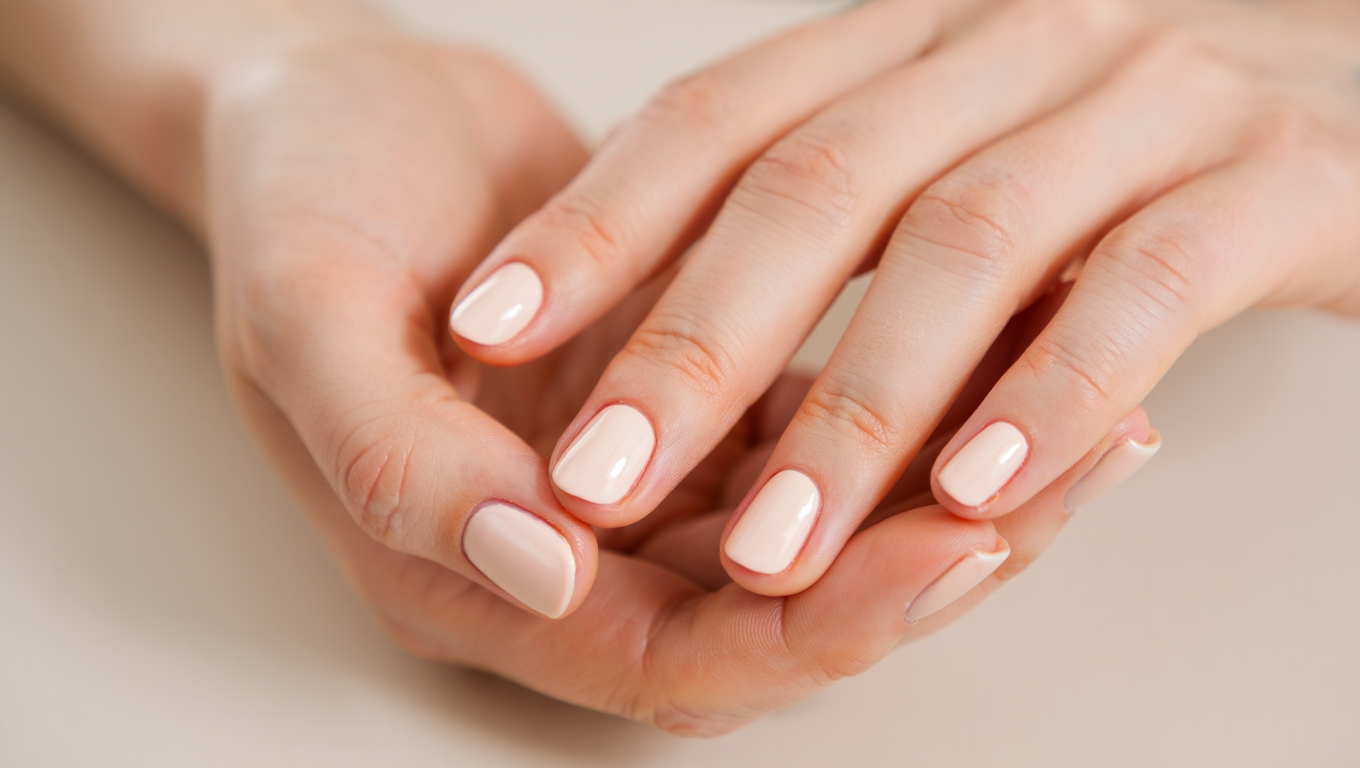Teens love color, tiny details, and quick changes. Nail art for teens means creative looks that stay practical for school, sports, and weekend plans. The term covers styles, products, routines, and salon choices built for younger hands. Clear steps, expert opinions, and real data keep this guide useful from start to finish.
Parents, teachers, and coaches ask tough questions. They worry about UV lamps, strong removers, and salon hygiene. Teens want designs that look cool without risking damage. This guide solves that gap with simple actions and smart habits.
Healthy nails support expression. Cuticles are delicate and need gentle care. Plates are thin and dry out fast. A balanced routine protects the nail while letting style shine. At the end of this article, you’ll find a free A4 checklist to print and use during salon visits or at-home routines.
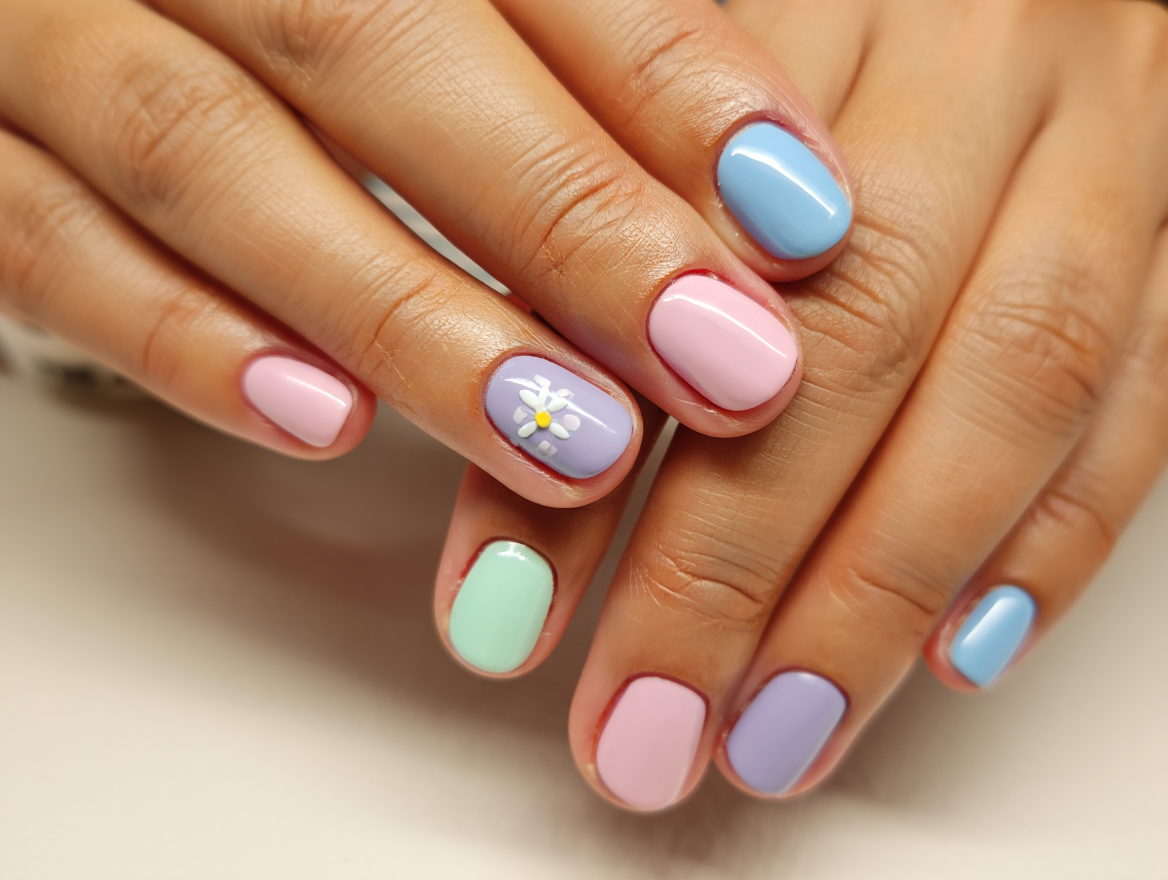
Popular teen nail styles
Trendy looks should feel wearable during busy days. Short shapes reduce snags and chips on keyboards, strings, and gear. Soft finishes keep designs neat for class and activities. Subtle accents deliver personality without drama.
Bright micro-symbols stay fun and manageable. Tiny stars, checker tips, or smileys work on short squoval or oval shapes. Sheer layers dry quickly and resist dents. Minimal art saves time while keeping edges smooth.
“The UV dose you receive during a gel manicure is brief but intense, so protect your hands.” — Chris Adigun, MD, dermatologist
Nail art for teens also means smart contrast and texture. Mix a matte base with glossy dots. Pair a pastel field with one bold accent nail. Stickers or stamping create crisp lines with little effort.
Nail designs younger clients often use a “mini statement.” One detailed nail balances four simpler ones. That trims product use and speeds removal later. A thin topcoat that caps the edge helps prevent lifting.
Keep nails short, edges sealed, and designs thin. Short length with capped tips cuts breaks during daily tasks.
Strong designs start with good prep. File from side to center using a glass file. Buff lightly for a smooth surface. Clean plates with alcohol before base coat. Apply two thin color coats and a protective top.
Teen nail art thrives on restraint. A single stripe, micro-heart, or tiny checker reads polished. That approach passes dress codes and still feels personal. Teens keep the look longer when it supports real life.
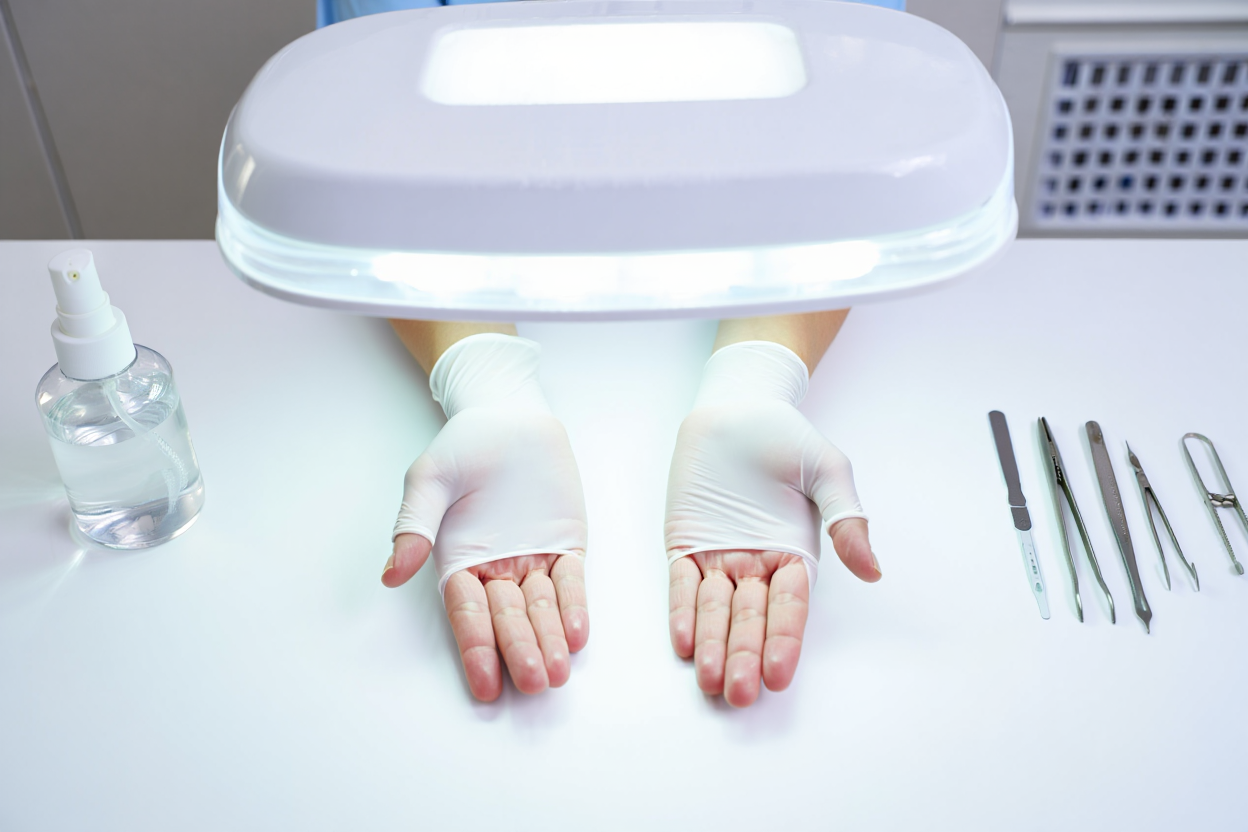
Safety & health advice for teen nails
Hands deserve protection before art. Clean tools, gentle prep, and good airflow reduce risk. Skip aggressive cuticle work and plate drilling. Ask for pushback only and trim hangnails if needed.
- Confirm disinfected metal tools and clean buffers.
- Apply SPF 30 on hands or wear fingerless UV gloves before curing gel.
- Sit near airflow or source-capture tables during services.
- Use non-acetone remover for regular polish changes.
- Limit e-file contact on the natural nail.
In a NIOSH field evaluation of four salons, source-capture ventilation lowered solvent levels and dust near workstations (2019, USA). For a deeper checklist on salon hygiene standards, review ventilation and disinfection practices used by modern studios. Choose tables with source capture, or sit near fresh airflow. These steps reduce headaches and dryness.
Safe manicure for teens includes careful product choice and removal. Over-soaking dries plates, and scraping thins the surface. Oils and gentle sliding protect the nail. Hydration after each service supports recovery.
“Super dry, damaged nails get drier and more brittle with acetone exposure.” — Dana Stern, MD, dermatologist
JAMA Dermatology reported that typical nail lamps present a small individual risk, yet cumulative exposure matters over time (2014, USA). Gloves or sunscreen help without losing gel durability. Smart habits beat worry or rumors.
Nail art for teens should treat curing like sun time. Protect skin, not polish. Keep lamps at recommended distances and times. Ask the tech to follow manufacturer guidance for the device.
Safe routines travel home too. Cap bottles tightly and store in a cool spot. Replace topcoat yearly for best performance. Wash hands after remover to clear any solvent residue. Moisturize skin and sidewalls.
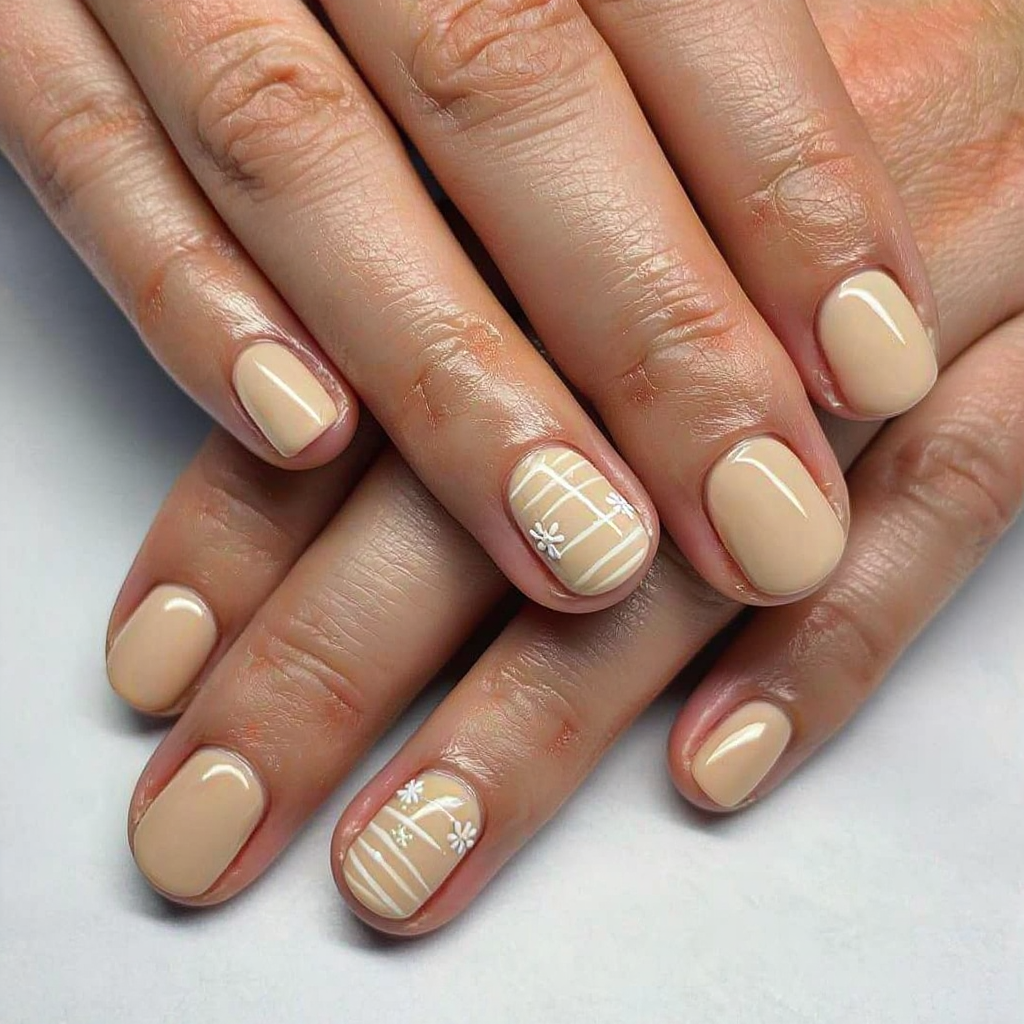
Age-appropriate designs
School rules and activities guide design choices. Short nails balance comfort and style. Subtle graphics fit uniforms and recitals. Flexible looks shift easily between classes, practices, and events.
Nail art for teens adapts to hobbies and teams. Dots suit astronomy fans, while checker tips fit skaters. School colors work for game days without going bold everywhere. A tidy finish avoids dress-code stress.
Nature Communications linked UV polish dryers to DNA damage in mammalian cells, based on lab models (2023, USA). The finding supports practical protections like gloves or SPF. Teens can enjoy gel while limiting exposure.
Safe manicure for teens also considers 3D pieces. Minimal gems avoid snags during sports or labs. Stickers remove cleanly with less filing later. Short shapes handle daily life better than long edges.
Comparison table: finishes, wear, and context
| Finish/Method | Typical wear | School-friendly | Removal difficulty | Best use case |
|---|---|---|---|---|
| Regular polish | 3–5 days | Yes | Easy, non-acetone | Frequent changes, subtle looks |
| Gel polish | 10–14 days | Usually | Acetone soak | Trips, events, busy weeks |
| Dip powder | 2–3 weeks | Sometimes | Soak + gentle file | Long wear, overlays |
| Stickers/decals | 3–7 days | Yes | Peel + oil | Fast art, minimal tools |
| Stamping | 5–7 days | Yes | Regular removal | Crisp patterns on short nails |
Nail designs younger clients should match the calendar. For lab-heavy weeks, use regular polish or decals. For travel, choose gel plus UV gloves. Right method, right moment.
Pick the finish by schedule. Short wear for rapid swaps, long wear for trips, always keep lengths short for safety.
Teen nail art benefits from neutral palettes with one twist. Soft beige with a tiny metallic dot reads clean. A pastel base with micro-checkers stays playful. Teens can rotate themes without pushing limits.
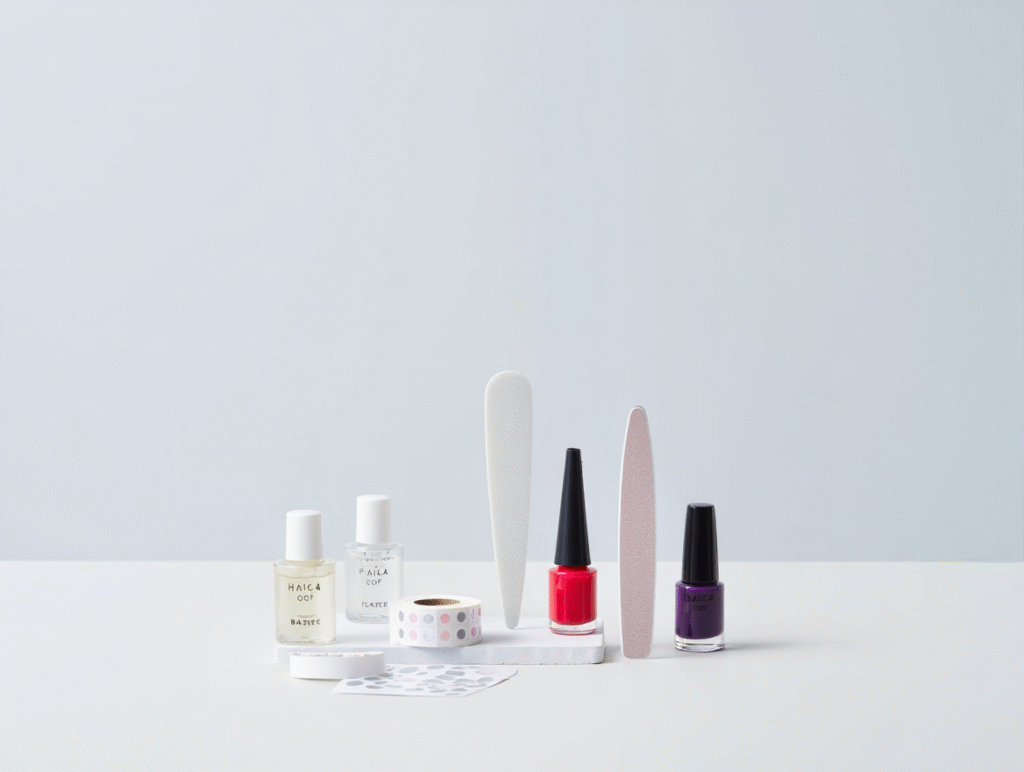
Budget-friendly options
Small kits beat huge hauls. A glass file, base, top, and two shades cover many ideas. Decals and striping tape cost little yet deliver clean lines. Stamping plates unlock dozens of patterns with one tool.
Nail art for teens thrives on DIY hacks. A bobby pin doubles as a dotting tool. A trimmed paintbrush handles fine lines. Tape creates perfect color blocks. These tricks save money and time.
“Apply thin coats and always cap the free edge to cut chips.” — Dana Stern, MD, dermatologist
Safe manicure for teens on a budget starts with care. Use non-acetone remover for regular swaps. Save acetone for occasional gel removal. Massage oil after every change to replenish moisture.
How to make a minimalist mani last
A clean plate matters most for wear. Push back cuticles gently and wipe with alcohol. Let base coat dry before color. Cap the tip with each layer.
- Paint a thin first coat, floating the brush and sealing the edge.
- Add a second light coat to level the color evenly.
- Place two tiny dots on one nail per hand using a pin tip.
- Glide on topcoat and cap the edge again for durability.
- After one hour, apply cuticle oil to sidewalls and skin.
- Smart budget moves:
- Buy a glass file once; it lasts for years.
- Swap stamping plates with friends, not liquids.
- Pick mini bottles to test trends without waste.
- Store bottles upright, away from heat and light.
Teen nail art can run on a capsule palette. Choose a neutral, a pastel, a bold, and a sheer sparkle. Mix them for different moods. Keep leftovers sealed tight.
Nail care basics for teens
Daily habits build stronger plates. Oil after washing hands, then cream before bed. Wear gloves for chores and yardwork. Keep lengths short to limit leverage on the nail.
Nail art for teens benefits from rest weeks. Skip enhancements after a long wear cycle. Hydrate twice daily and use a sheer strengthening base. Avoid formaldehyde hardeners and pick balanced formulas instead.
Studies across youth have reported onychophagia rates around 20–33% in children and adolescents (2011, Iran; multiple international reviews). Replacing biting with a stress tool helps growth. Bitter clear polish can reduce chewing. Nails rebound once the habit changes.
“Never cut the cuticle. It is a seal that protects the nail.” — Antonella Tosti, MD, dermatologist
Safe manicure for teens depends on gentle removal. Soak only as long as needed, then slide product with a wooden pusher. Avoid prying that peels layers. Follow with oil and a hydrating hand cream.
Moisturize nails like skin. Oil after washing and before bed to prevent peeling, splitting, and breaks.
Nail designs younger clients should embrace smooth edges. File from side to center with light pressure. Buff only to remove ridges, not to shine excessively. Clean tools before each session to avoid irritation.
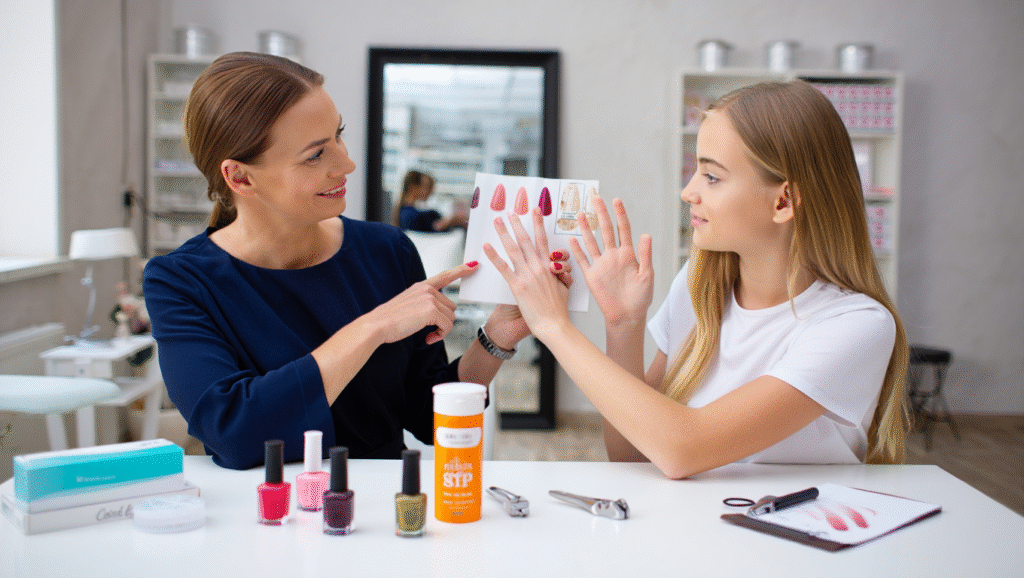
Parental guidance & consent
Clear rules make choices easy. Agree on allowed lengths, shapes, and finishes for school. Decide when gels fit, like before dances or trips. Set a budget and a refresh schedule that respects priorities.
Nail art for teens must respect activities. Musicians and athletes need short edges and smooth tips. Science labs require minimal 3D parts. Planning ahead avoids last-minute debates before events.
Field research across U.S. salons linked better ventilation and source capture with lower airborne solvent levels and dust (2019, USA). Ask to sit near airflow or choose quieter hours. Comfort improves when the air is clean.
Safe manicure for teens includes consent for enhancements and clear aftercare. Teens should understand removal steps before application. Parents can ask for UV gloves or SPF at the lamp. Keep home supplies labeled and stored safely.
Nail designs younger clients change with seasons and teams. Families can pre-plan color themes for holidays and games. That keeps choices fun but predictable. Everyone saves time during busy weeks.
FAQ
How to make polish last through a school week?
Cap the free edge on every coat and keep layers thin. Wait a few minutes between coats to reduce dents. Oil daily to reduce chips from dryness.
Why do short nails suit active teens?
Short lengths snag less on gear and keyboards. They chip less under stress and keep art tidy. Maintenance stays quick during packed schedules.
What’s better for a packed month: gel or regular polish?
Gel lasts through trips with fewer touch-ups. Regular polish swaps quickly for lab days or games. Protect skin during gel curing with gloves or SPF.
For teens, it is essential to combine trendy nail art ideas with health-conscious and safe practices. This video features fresh 2025 nail art ideas that are school- and activity-friendly, plus expert tips on care and safety.
Conclusion
Nail art for teens works best with short shapes, gentle prep, and careful removal. Teens can explore colors, textures, and patterns without sacrificing health. Parents support safety by setting boundaries and asking salons simple questions. Keep nails hydrated, edges sealed, and plans realistic. Creative looks last when care comes first.
Use the checklist below to turn good intentions into consistent habits. It fits on a single A4 page, guides quick decisions at the salon, and keeps daily care simple. Print it, fold it into a planner, or save it on your phone for fast reference. Consistency builds stronger nails and makes every design last longer.
